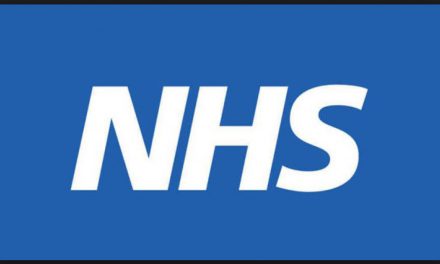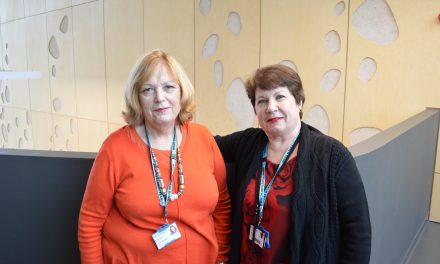Shelley Moore and her daughter Stephanie
World Sepsis Day is on September 13, and to raise awareness of an illness estimated to kill 30 million people a year globally – and up to 44,000 people a year in the UK – East of England Ambulance Service NHS Trust (EEAST) is encouraging people to learn to spot the signs of sepsis – and know what to do.
Sepsis is when the body reacts aggressively to infection. Because of this, its initial symptoms can easily be mistaken for routine viral infections such as ‘flu, but there are tell-tale signs that can let you know that you or member of your family have sepsis – and you need to act fast.
The following symptoms can indicate sepsis:
Slurred speech or confusion
Extreme shivering, muscle pain or fever
Passing no urine all day
Severe breathlessness
It feels like you’re going to die
Skin mottled or discoloured
If you or a relative have a confirmed or suspected infection and are experiencing any of these symptoms, you should contact your GP or NHS111. If these symptoms appear in a person recovering from surgery, receiving treatment for cancer, having any another immune-suppressant condition or is either elderly, an infant or otherwise frail, call 999 and say that you suspect SEPSIS.
As part of World Sepsis Day, EEAST staff have been sharing stories about how they have been affected by sepsis in their families:
My daughter was 20 minutes from intensive care
Shelley Moore, a Senior Call Handler at our Norwich Emergency Operations Centre told us how an apparently simple infection almost became critical, and how her own training spotted the warning signs before it was too late.
“I also volunteer as a Community First Responder and on one call I attended, the paramedic talked me through the signs of sepsis. I believe that conversation saved my daughter’s life.
“One Thursday afternoon my 28-year-old daughter, Stephanie, called and asked me ‘Mum, what does a urinary tract infection (UTI) feel like?’
“I explained the symptoms and told her to get something from the chemist that afternoon.
By Friday, she hadn’t been to the chemist but said she would go in the morning.
“On Saturday morning she called me again to say she now had pain in her back. I urged her to get an out-of-hours GP appointment as it sounded like the infection was now in her kidneys.
“By Sunday, and now on antibiotics she started to feel better, and I presumed that was that.
But on the Monday morning I got a call saying she was feeling very rough, with ‘flu like symptoms. I urged her to go to the doctor again but she thought ‘Mum’s fussing I’ll be fine after a sleep.’
Four hours later her partner called to say that she was now feverish, hurting all over, shaking really badly, and had pain in her chest.
“Alarm bells rang so loudly. I told them to call 999 straight away but knowing that I work as a call handler and get emergency calls from people with coughs and colds etc, they refused. I told them to call 111 and repeat the symptoms to them.
The call to 111 had barely ended before a rapid response vehicle arrived, closely followed by an ambulance. She was rushed to hospital on blue lights.
At one point in A&E they told Stephanie she was 20 minutes away from being taken to Intensive Care as they could not get her temperature down. Thankfully, with a further three lots of antibiotics and paracetamol, they finally got things under control and she was taken to a ward. She was kept in for a week, and took several months to get anything like back to full health again
“My daughter was lucky – after all it started as a simple UTI and within four days she was almost in Intensive Care.
“Sepsis kills. It could have killed my daughter. Talk about sepsis – be sepsis aware.”






Recent Comments